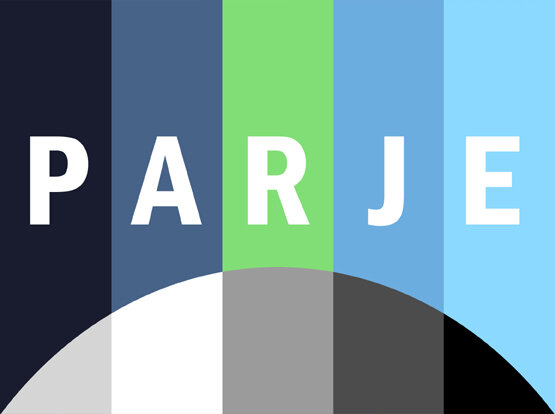Edmund Pettus Bridge Diptych Painting
This first work commissioned by PARJE is a two-paneled painting (a diptych) meant to be seen together. The work reflects on the Edmund Pettus Bridge. This bridge played a pivotal part in our country’s Civil and Voting Rights history.
Nancy Gladwell is working on the left side of diptych, showing the Edmund Pettus Bridge as it was on Bloody Sunday in 1965, Jasmine or Jas Oyola- Blumenthal is working on the right side of the diptych, a more impressionistic painting of how we hope the bridge will look sometime in the future when we’re all working together to overcome systemic racism.
These two paintings, both about 2 feet by 3 feet will be hinged together in a wooden carrying case that can then travel between schools, libraries, faith communities, museums to teach what it means to be engaged in “good trouble.”
The hinges that connect these paintings might also be seen as significant. It’s important that the 2 paintings not be seen as “before” and “after” images, that we still have a long, long way to go, “miles to go before we sleep”, much work to build the “beloved community” if we’re ever to realize the peaceable kingdom on the far side of that bridge. It doesn’t take too much observation to see how horribly “unhinged” the world is at the moment.
The hinge is a type of lever, and so even as we contemplate the paintings on the left and on the right, we can ask ourselves, how we can be the “hinge”, how we can provide the leverage so necessary at this time?
As the Greek philosopher Archimedes said, “Give me a lever, and I can move the world!” May we live in that hope and that confidence!
ABOVE: Work in progress image. Left side of painting by Nancy Gladwell)
“I'm attempting to capture a more joyous and "togetherness" outlook of bloody Sunday. A young girl sketching (soon to be MLK and John Lewis faces) yet on her desk are newspaper articles from that time/ possible stacked history books pertaining to voting rights/ social justice. Joining her are everyday fighters of freedom. No matter the color, age, religion or political spectrum, people coming together for the greater good is what I dream of. Only love! “
- Jas Oyola-Blumenthal
ABOVE: Work in progress. Right side of painting by Jas Oyola-Blumenthal
WHY THE EDMUND PETTUS BRIDGE?
Built in 1940 in Selma, Alabama and named after a former senior officer in the Confederate Army and a Grand Dragon of the state’s Ku Klux Klan who died in 1907. The bridge’s name was and is a constant reminder to Selma’s black population that white supremacy still reigns. In 1965 a young John Lewis led a march across that bridge advocating for voting rights for black citizens. The first March was peaceful and orderly, yet it was met with violent opposition from the white state troopers. John Lewis was severely beaten, and gassed, as was a young black woman. A young black man trying to protect his mother from the troopers was shot to death. That day is known as “Bloody Sunday”.
Voting rights for people of color remains an issue to this day. PARJE is dedicated to dis-assembling systemic racism, and to that end, ensuring the right to vote for all. There were three marches in succession that March all advocating for the black vote. These events led to the passage of the Voting Rights Act in 1965 under Lyndon Johnson’s administration. One half of the diptych will tell the story of Bloody Sunday with a central depiction of the march, surrounded by vignettes depicting significant events around and during that day. Also included are portraits of Pettus, Lewis and other champions of Racial Justice and voting rights.



